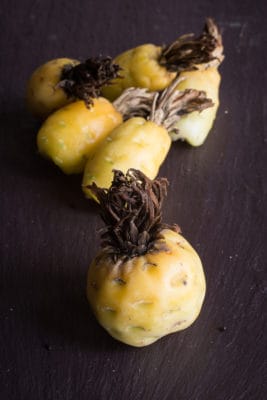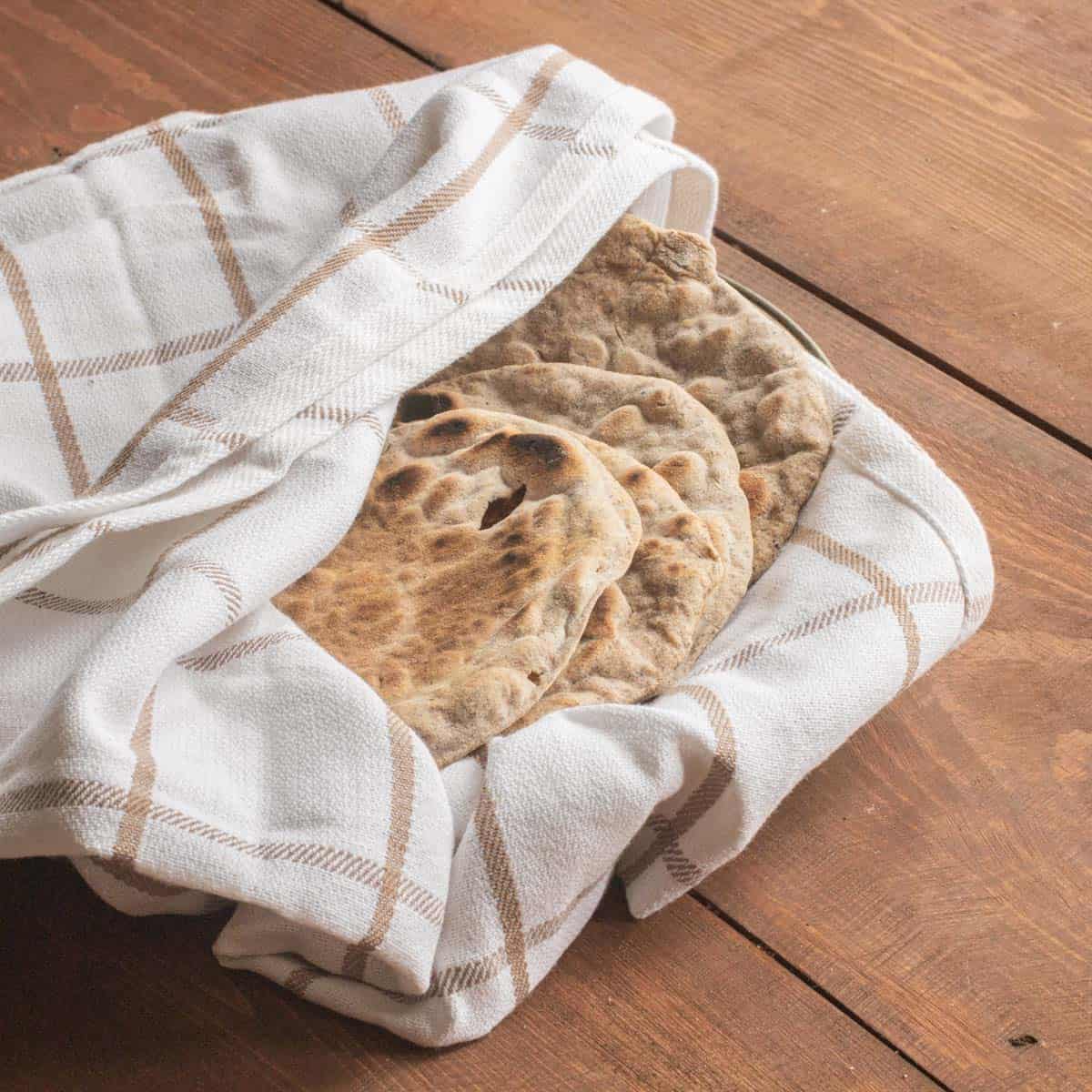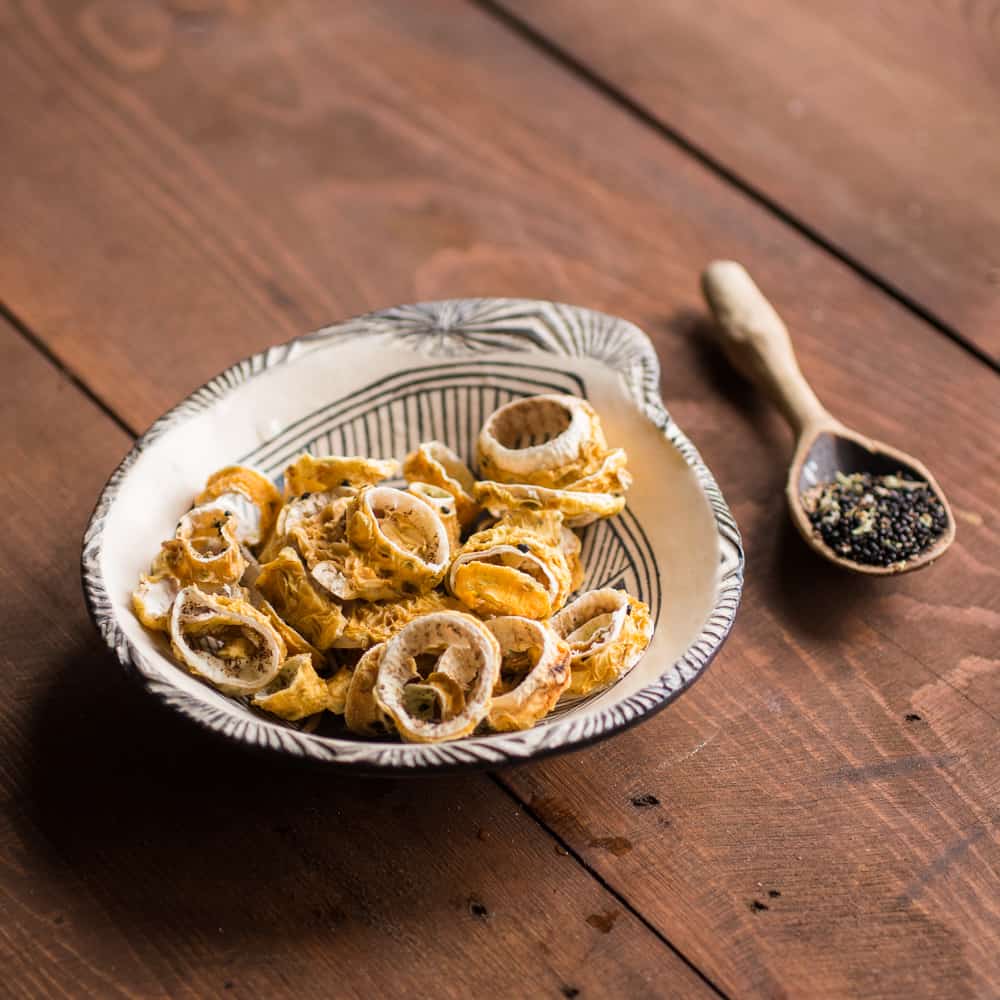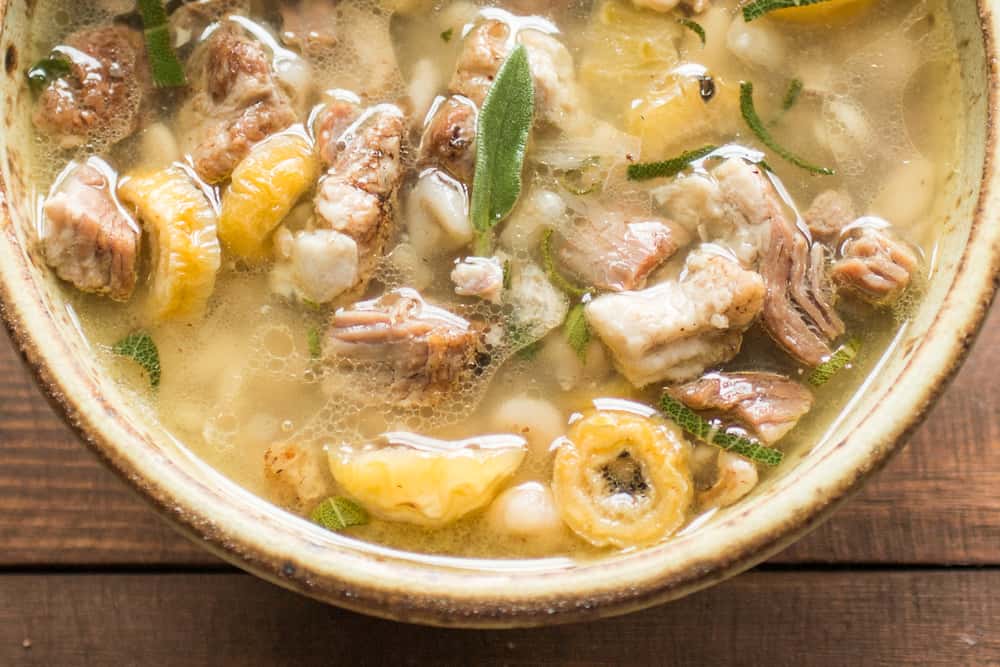A rich, brothy stew of goat meat with tart barrel cactus buds, onions, herbs and flatbreads made from cactus seed is hands down my favorite barrel cactus recipe.

Barrel cactus fruit were the latest desert edible I gathered on my yearly trip to Arizona, and, as far as interesting ingredients go, these are about as cool as they get. It doesn't hurt that they're absolutely a world-class ingredient, and helped me make one of the greatest soups I've ever made.
Crafting a dish with desert ingredients
When I got back to Minnesota, I knew I wanted to make a recipe with the cactus fruit after I figured out how they would cook, but I wanted it to be something that reminded me of the trip, and the region.

Thinking about the desert, I came up with a good place to start, and after a couple batches, I have a great recipe using them, that's actually more of a two-for-one, since there's a sub-recipe for sourdough flatbreads made with toasted cactus seed flour.
Here was my goal: use only ingredients that could be found in the desert, and cook them in simply, in one of mankind's oldest preparations: a simple stew of meat, vegetables, herbs and liquid.
Goat, wood ash hominy, tepary beans, sage, and cactus fruit
First I needed the base, which would be a meat broth, and, as desert climates are not naturally good for raising cattle, beef was out. Lamb and goat though, are naturally drought-tolerant animals, and, as I had some goat, I used that, channeling the mountain goats and big horn sheep we saw a few hunters looking for on my hike with my dad while we hunted cactus fruit. The next ingedients are also desert staples: sage, wood ash hominy (processed by me), and tepary beans, a species of wild bean traditionally cultivated by Native Americans.
Everything gets cooked together like you'd expect, but the magic is in the cactus fruit. Fresh, the flavor is very sour and slimy, reminiscent of napolitos (cactus paddles) if you've ever had them.
Dried, the flavor of the barrel cactus fruit transforms, the cactus slime gets tamed and weakens, although still present, it thickens like very weak cornstarch. The sour flavor mellows into a gentle tartness and what you end up with is something that's a bit like avgolemono soup, the famous greek soup thickened with an egg liason and flavored with lemon juice.
Cactus seed flour
From here, I had the soup done, but I needed to figure out something to do with the seeds. The little pinneapple-looking fruit have a lot of seeds in them, and my friend Felicia, a Native American cook, and forager, said she would occasionally dry them and grind into a meal.

I ground a few seeds up and was unimpressed, also, I had to make sure the cactus seed flour was finely ground to make sure it wasn't gritty. After that, frustrated, I remembered to toast the seeds, which is always a good idea to try with a lot of dried ingredients, and the magic started happening.
The toasted seeds were nutty and aromatic, and smelled almost like something you might use as a coffee substitute. I had a good amount of seeds, but sprinkling them into the soup would one: be gritty, and two:seemed strange. I needed to figure out a way to suspend the seeds and their flavor into something, and it still needed to be desert themed.

The key came from the classic Italian peasant soup called minnestrella, a specialty of Garfagnana in the North that's said to be made with 30 or so species of wild spring plants. The soup itself is a simple stew of beans and greens, but it's served with an unleavened flatbread made from cornmeal that's dipped in the soup as you eat it. BINGO.

I took some sourdough starter and cornmeal, and worked out a proportion heavily seasoned with the cactus seed flour and got to work. A couple batches later, and, I was really happy with the result.
The flatbreads will lose some aroma if they aren't made fresh and served quickly, so know that. The color and aroma they add to the flatbread, along with some finely ground cornmeal, is really special, especially dipped into the broth of the stew while it's eaten, or used as a utensil.
Goat Stew with Barrel Cactus, Tepary Beans, and Hominy
Equipment
- 1 3 quart soup pot
Ingredients
- ½ lb goat leg or shoulder cut into 1 inch cubes
- 40 grams dried tepary beans or ¾ cup cooked beans
- 5 cups water
- 3 grams / 1 tablespoon crushed dried wild onion bulbs or ramp leaves
- ½ teaspoon kosher salt plus more to taste
- 40 grams dried hominy or ¾ cup-1 cup cooked hominy I never mind extra hominy
- 10 grams sliced dried barrel cactus fruit
- 2 tablespoons tequila
- 1 tablespoon sliced fresh sage
- A few scrapes of fresh orange zest optional
- Crushed red pepper a pinch (optional)
- 1 tablespoon lard or cooking oil
- Barrel cactus seed flatbread for serving (optional, see recipe)
Instructions
- The night before, cover the beans in 3 times their volume of water, and refrigerate, then do the same with the hominy.
- The next day, drain the beans, then cover with fresh water and cook, covered, until just tender, without adding salt, then reserve. Season the goat meat with the salt and pepper, then brown in the oil in a 2 qt saucepot.
- Add the water tequila, cactus fruit, dried wild onions and red pepper if using. If your barrel cactus are not in bit-sized pieces, you may want to hydrate them separately until they soften for a few minutes, and then cut into ½ inch or so pieces.
- Cover the pot and cook for 45 minutes to 1 hour, or until the goat is tender. Add the sage, hominy, orange zest, and beans and simmer for another 15 minutes for the flavors to meld. Taste and adjust the seasoning as needed, then serve with the cactus seed flatbread, dipping the flatbread into the broth as you eat.


Kym
From AZ. I am trying it tonight with mutton, great northern beans, leek and bell peppers. Got some Barel cactus fruit from the neighborhood! Very excited.
Alan Bergo
Oh that sounds like a great variation.
Mackenzie H
I tried this with some modifications, like adding yellow bell peppers and substituting pork for goat because I'm a poor grad student. Overall it turned out pretty good! Expect this recipe to take a while because the tepary beans require at least a couple hours to soften even after soaking overnight.
Alan Bergo
I'm impressed you gave it a shot. I'm actually in Arizona right now and getting ready to pick more cactus buds. I love the sour tang they add to soup.